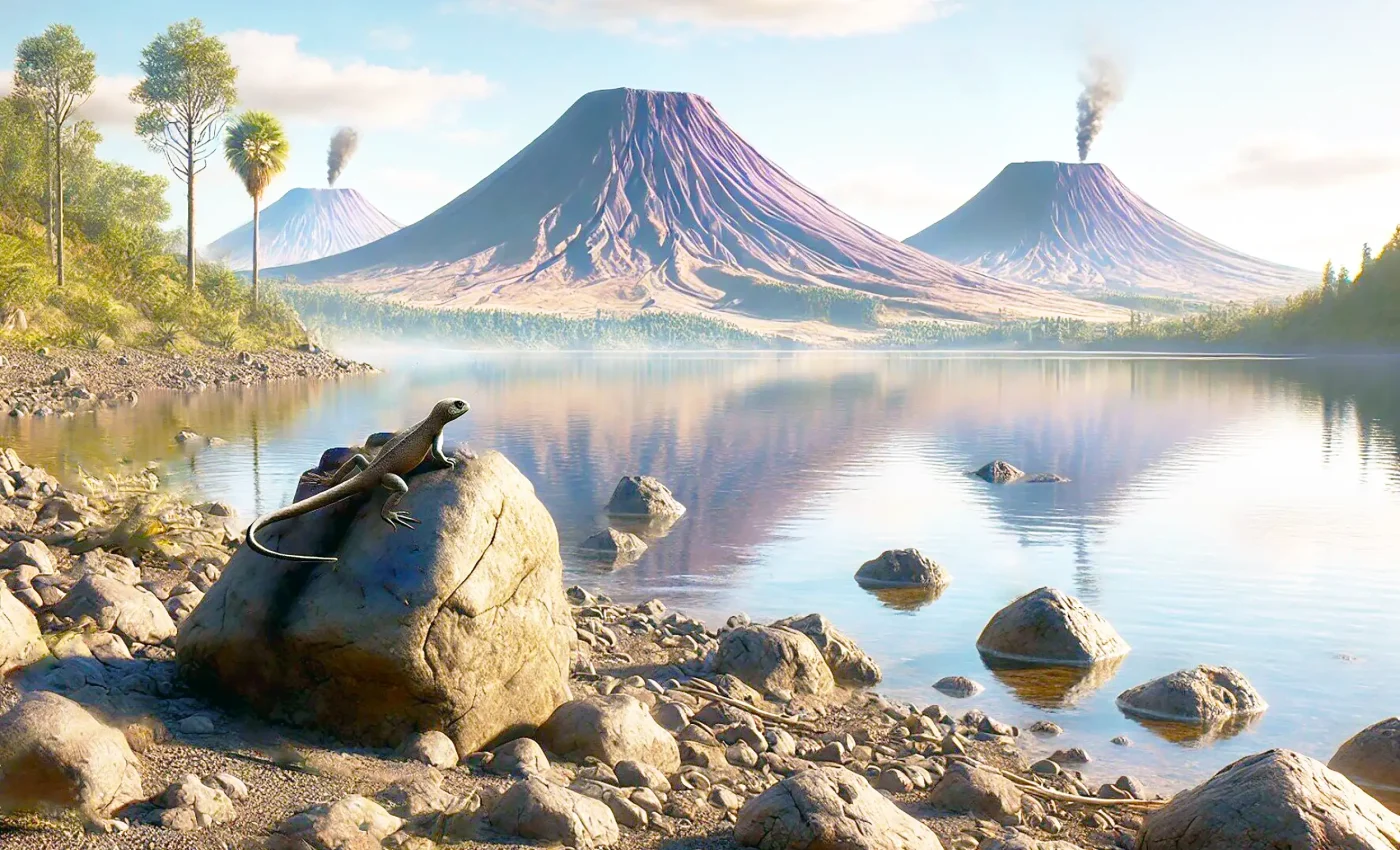
Unexplainable gap in the fossil record now partially filled with new tetrapod discovery
In 1984, an amateur paleontologist discovered a small fossil in Scotland. Though just 20 centimeters (8 inches) long, the creature – Westlothiana lizziae – would become central to understanding how life first walked onto land.
Scientists knew it was an early tetrapod, the ancient group that gave rise to amphibians, reptiles, birds, and mammals, but no one was able to date the fossil accurately.
New tools, new timeline
In a new study from The University of Texas at Austin researchers applied radiometric dating to rock samples from East Kirkton Quarry.
These samples surrounded Westlothiana and other ancient tetrapods. Zircon crystals within the volcanic sediments allowed scientists to use uranium-lead dating.
The outcome: the fossils are up to 346 million years old – not 331 million, as earlier assumed.
That means Westlothiana lizziae lived during a mysterious period called Romer’s Gap. This stretch in the fossil record, from 360 to 345 million years ago, lacks many tetrapod fossils.
Scientists have long wondered what happened during this pivotal time when fish began to develop limbs and lungs.
Volcanic lake preserved Westlothiana
The quarry’s rocks preserve the story of a volatile setting. As revealed in the study, Lake Cadell once sat near active volcanoes. Mud, ash, and lava flowed into the lake, creating toxic, mineral-rich waters. These conditions enabled unusual fossil preservation.
The research was led by Hector Garza, who just graduated with his doctoral degree from the Department of Earth and Planetary Sciences at the UT Jackson School of Geosciences. Garza’s team analyzed rock layers that included tuffaceous limestone and volcaniclastic shale.
These layers often formed from epiclastic flows – debris-laden volcanic slurries that carried zircon-rich sediments into the lake.
The minerals helped preserve a snapshot of an ecosystem rich with ancient tetrapods, fish, arthropods, and plants. The dating focused especially on Unit 82, where Westlothiana and five other species were entombed.
Dating the Westlothiana fossil
To estimate age, Garza’s team extracted and examined zircons from samples EK82 and EK83. From EK82, they obtained 69 reliable zircon dates.
Using a method called the Youngest Mode Weighted Mean, the team found the most reliable age: 341 ± 3 million years. Sample EK83 supported this with a single concordant date of 334 ± 5 million years.

Though the researchers only had limited zircon grains due to strict sampling laws at the Site of Special Scientific Interest, the findings still pushed the timeline back enough to move these fossils firmly into Romer’s Gap.
What the chemistry reveals
Chemical analysis of the rocks showed fluctuating conditions in the ancient lake.
Some samples were rich in trace elements like nickel, chromium, and vanadium, which are signatures of basaltic volcanic inputs. Others held more quartz and clay, suggesting pulses of sediment from nearby highlands.
According to mineral analysis, the lakebed hosted carbonate-rich sediments. These came from hydrothermal activity and volcanism.
Clays like illite and chlorite may have formed not just from erosion, but through chemical reactions in the lake.
This complexity mirrors the biological diversity found in the fossils. Each rock layer reflected a brief episode in a dynamic ecosystem – one shaped by eruptions, toxic waters, and the arrival of early life on land.
Westlothiana and animal evolution
“I can’t overstate the importance of the iconic East Kirkland tetrapods,” said Julia Clarke, professor at the Jackson School and co-author of the study. “Better constraining the age of these fossils is key to understanding the timing of the emergence of vertebrates on to land.”
The refined date of 341 ± 3 million years doesn’t just change the timeline. It helps scientists calibrate evolutionary trees more precisely. That leads to better models of when and how major groups like amphibians and reptiles evolved.
The East Kirkton site has revealed a treasure trove of early tetrapods, including Silvanerpeton miripedes, Balanerpeton woodi, Ophiderpeton kirktonense, Eucritta melanolimnetes, and Kirktonecta milnerae.
Each species holds clues about the transition from water to land. These fossils show features like strong limbs, supportive spines, and partial adaptations to life out of water.
New date fills missing fossil record gap
Romer’s Gap was once considered a blank page in fossil history. New data suggest it’s more like a page smudged by biases in preservation and collection.
The lake’s unusual chemistry and the volcanic setting at East Kirkton created rare conditions where delicate fossils could survive.
By refining the fossil ages and geochemical context, Garza’s team has helped peel back one of the most obscure periods in vertebrate evolution.
Their work shows how geology, chemistry, and paleontology can combine to tell stories that rocks alone cannot.
The study is published in the journal PLOS One.
—–
Like what you read? Subscribe to our newsletter for engaging articles, exclusive content, and the latest updates.
Check us out on EarthSnap, a free app brought to you by Eric Ralls and Earth.com.
—–













